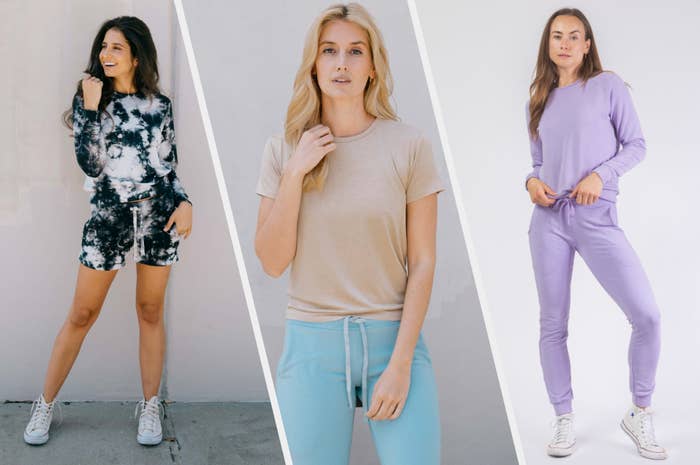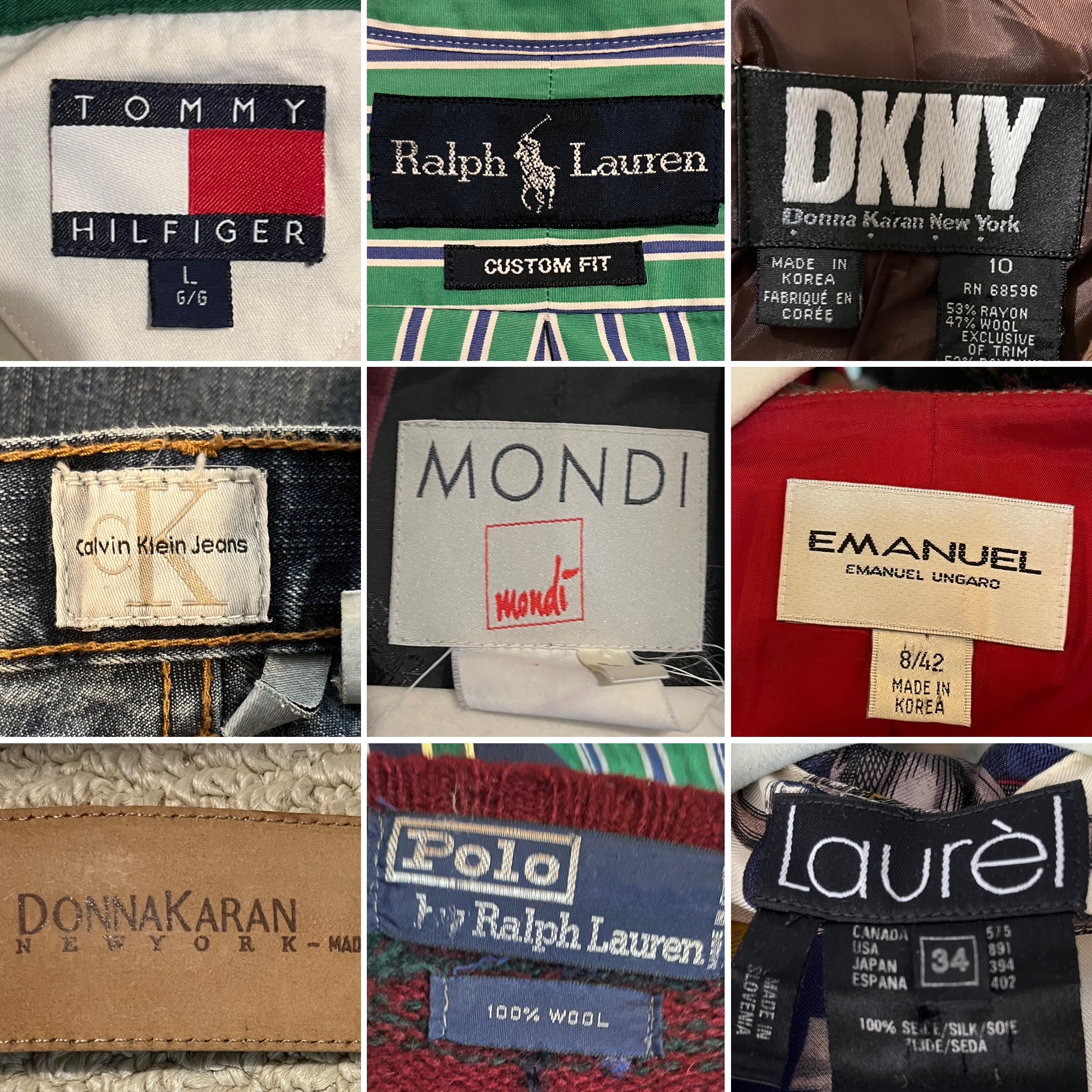How Sustainable Fabric Trends Are Shaping Branded Clothing Collections
Comprehending Garments: The Value of Fabric Selections in Your Wardrobe
The option of textile in garments plays a pivotal duty in both appearances and capability. Various products provide differing degrees of breathability, convenience, and longevity, straight affecting the wearer's experience. Comprehending these nuances can enhance one's wardrobe considerably. Many ignore exactly how these selections can affect not simply personal design, but also sustainability. What material choices could redefine your wardrobe and straighten it with both design and duty?
The Function of Textile in vogue and Functionality

Common Textile Types and Their Attributes
When choosing clothing, comprehending the attributes of common textile types is necessary for making educated choices. Cotton, a widely-used natural fiber, is recognized for its adaptability, breathability, and gentleness, making it ideal for sportswear and day-to-day garments. Linen, one more all-natural choice, boasts superb moisture-wicking buildings and an unique texture, ideal for cozy climates.Wool, usually favored for its warmth and durability, varies in excellence; merino wool is soft against the skin, while coarser types are made use of for outerwear. Synthetic materials like polyester and nylon supply resilience and resistance to wrinkles, making them popular for activewear and travel garments. Ultimately, blends, which incorporate artificial and natural fibers, can improve performance while preserving comfort. By acknowledging these textile attributes, people can choose garments that straightens with their way of life and aesthetic choices.
Breathability and Convenience: Picking the Right Fabrics for Different Environments
Selecting the ideal fabrics for numerous climates can greatly improve convenience and total wearability. Breathable products are crucial in warm environments, as they enable air circulation and wetness evaporation. Fabrics such as cotton, bed linen, and moisture-wicking synthetics effectively draw sweat far from the body, keeping the user cool and dry. Alternatively, in cooler climates, thicker materials like woollen or fleece offer insulation while preserving breathability, making certain warmth without overheating.Additionally, the option of textile weight plays an essential role; lightweight materials are better for summer season, whereas larger choices are suited for winter months wear. Comprehending the one-of-a-kind homes of each fabric allows people to clothe appropriately for differing climate problems. Ultimately, selecting comfortable and breathable materials customized to specific environments can considerably enhance everyday convenience and improve the general experience of wearing clothes.
Resilience and Treatment: Just How Fabric Affects Durability of Your Wardrobe
Choosing the best materials can substantially influence the longevity and treatment needs of a closet. Fabrics such as cotton and polyester are understood for their durability and simplicity of maintenance, making them suitable for daily wear. On the other hand, fragile materials like silk and lace call for even more cautious handling and specialized cleaning approaches, which can increase the moment and effort required for care. Branded Clothing.Durability is additionally affected by the textile's weave and coating; tightly woven materials have a tendency to resist wear and tear far better than freely woven options. Furthermore, synthetic blends usually supply boosted resilience, combining go to the website the most effective high qualities of multiple fibers.Understanding the care guidelines for every fabric is necessary, as incorrect drying or washing can bring about premature wear. Ultimately, choosing sturdy products can bring about a longer-lasting wardrobe, decreasing the regularity of replacements and contributing to a more sustainable fashion option
The Influence of Fabric on Fit and Shape

Lasting Textile Options: Making Eco-Friendly Choices
The influence of textile expands beyond fit and shape to include environmental variables, motivating a growing passion in lasting fabric options. Environment-friendly textiles, such as organic cotton, hemp, and Tencel, are acquiring traction amongst consumers that focus on sustainability in their wardrobes. These products are usually created with fewer chemicals and water, minimizing their environmental footprint.Additionally, recycled textiles, made from post-consumer waste, provide an ingenious service to the textile market's air pollution trouble. Brands increasingly accept transparency in their sourcing approaches, allowing consumers to make enlightened choices regarding their purchases.Choosing sustainable materials not only sustains moral techniques yet also motivates the garment industry to embrace more responsible manufacturing methods. As awareness of ecological concerns rises, individuals are advised to review the long-lasting influence of their fabric selections, their website promoting an activity in the direction of an extra sustainable and environmentally aware method to style.
Elevating Style: Exactly How Material Can Transform a Clothing
While numerous might concentrate on shade and cut when choosing a clothing, the choice of material plays a crucial function in elevating design and enhancing total appearance. Various materials share unique moods and messages; for example, silk exudes high-end and class, while jeans supplies a laid-back, kicked back vibe. The structure and drape of a fabric can substantially modify the shape, with organized fabrics offering a polished look and softer ones creating a more fluid, loosened up aesthetic.Moreover, the weight of the fabric affects wearability throughout periods. Lightweight textiles like bed linen and cotton are optimal for summertime, while larger materials such as woollen and velour supply warmth and elegance in cooler months. Recognizing textile properties, such as breathability and stretch, likewise empowers people to make informed choices that enhance convenience without endangering style. Eventually, the ideal fabric can transform an outfit from common to amazing, making it a vital factor to consider in any kind of closet.
Often Asked Inquiries
Exactly how Do I Determine the Material Content of My Garments?
To determine material web content, one can examine care labels, conduct burn examinations for fiber recognition, or consult textile examples. These techniques help distinguish materials, guaranteeing educated options for apparel care and upkeep in daily wear.
Can Fabric Option Affect My Mood or Self-confidence?
Material selection can considerably impact an individual's state of mind and confidence. Branded Clothing. Certain materials might evoke sensations of comfort or sophistication, while others can feel uncomplimentary or restrictive, ultimately affecting self-perception and emotional well-being throughout the day
What Fabrics Are Finest for Delicate Skin?
For people with sensitive skin, natural fabrics like cotton, bed linen, and bamboo are typically advised. These materials are breathable, hypoallergenic, and much less likely to create irritation, making them ideal options for comfort and skin health and wellness.
Just how Do I Appropriately Clean and Care for Different Fabrics?
To correctly clean and care for various materials, one should think about each material's certain needs, consisting of temperature level settings, detergents, and drying out approaches, ensuring long life and preserving the fabric's original qualities for perfect use.
Exist Certain Fabrics for Athletic or Efficiency Wear?
Athletic or efficiency wear usually makes use of textiles such as nylon, spandex, and polyester. These materials are developed for moisture-wicking, breathability, and versatility, boosting movement and comfort during physical activities while supplying sturdiness and assistance. Conversely, in cooler climates, thicker materials like woollen or fleece give insulation while maintaining breathability, making sure warmth without overheating.Additionally, check out this site the choice of textile weight plays an essential function; lightweight fabrics are more effective for summer, whereas heavier alternatives are fit for winter months wear. In contrast, fragile materials like silk and lace require more careful handling and specialized cleansing methods, which can boost the time and initiative needed for care.Durability is additionally affected by the textile's weave and surface; tightly woven fabrics tend to resist wear and tear better than loosely woven alternatives. In contrast, inflexible materials can restrict movement yet offer a classic, refined look.Moreover, the density and structure of the fabric can affect the aesthetic understanding of body form. The influence of textile extends beyond fit and shape to incorporate environmental factors, triggering a growing interest in lasting material options. The texture and drape of a textile can substantially change the shape, with organized textiles offering a sleek look and softer ones creating an extra fluid, kicked back aesthetic.Moreover, the weight of the fabric affects wearability across seasons.